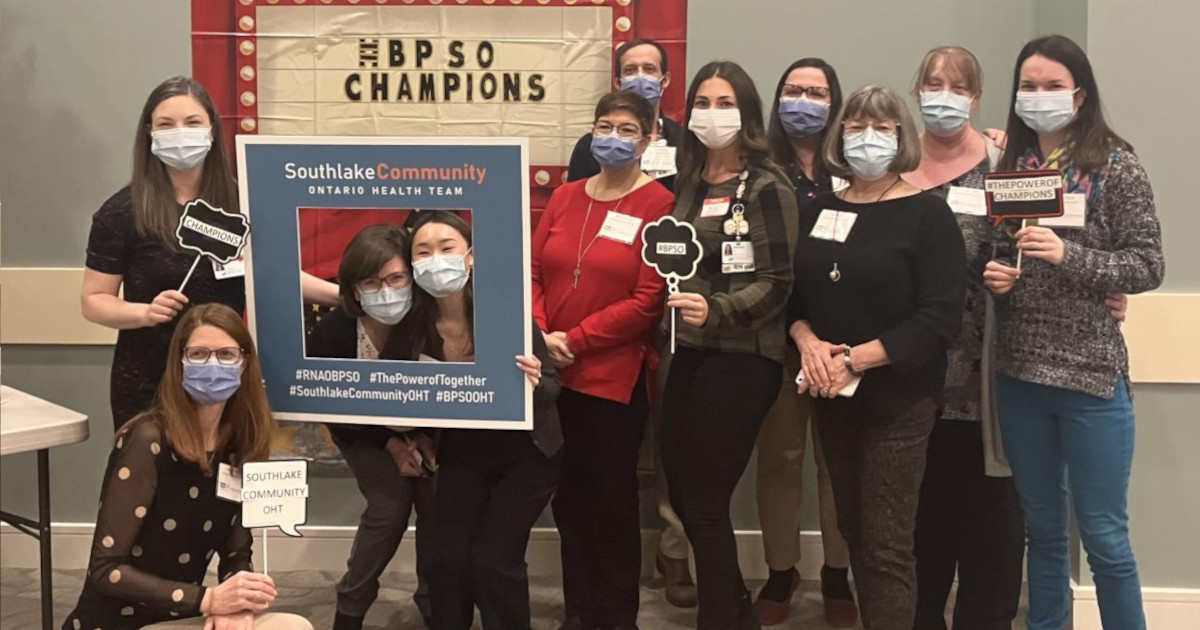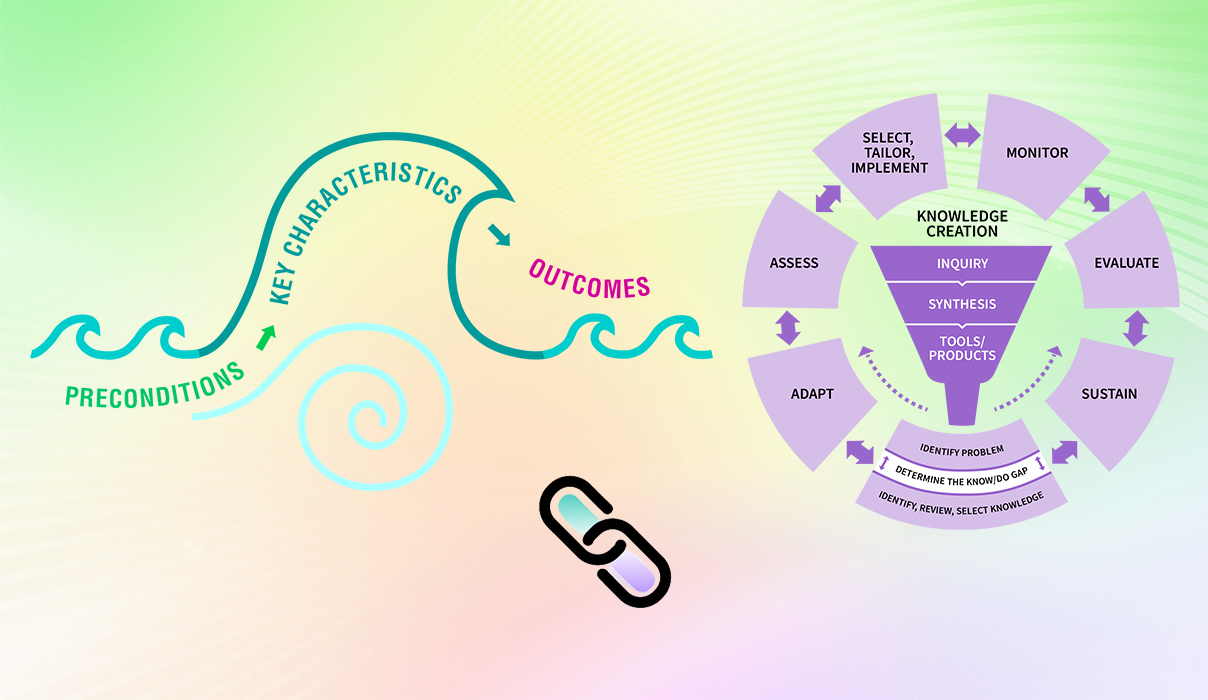Networks of people and resources
Index
Networks are one of the 10 key characteristics of a social movement and play a key role in connecting change agents to one another to support evidence uptake and sustainability. In this section, you will learn about networks as a source of social capital and what makes networks effective in social movements.

What is this element?
Social movement networks act as essential structures supporting the connections between groups of individuals and organizations (for example, communities, agencies or governments) engaged in a shared concern or a strongly desired change.
Networks in social movements are fluid – membership in networks evolves and varies over time as the social movement develops. They can organize quickly with a shared alliance, but can also rapidly unravel due to several factors – for example, if disagreements arise or if the shared concern or desired change becomes irrelevant (Katcher, 2010).
Networks are a public platform for individuals and organizations to identify their support of a shared concern or strongly desired change. The network acts as a meeting ground for people, groups and organizations that align around a shared concern or strongly desired change. Through their membership and participation, they can share information, make contacts, build capacity and find partnerships with others doing similar work (International Council for Nurses, 2010).
Networks are a type of social capital of groups of similar and diverse people participating together in change. Groups of people work together in a network because of their shared values and social norms – a concept referred to as “social capital” (Campbell, 2020; Claridge, 2018; Hofmeyer and Marck, 2008).
Networks can be either formal or informal structures:
Formal networks
- Are hierarchical structures with expectations and obligations written in documents such as agreements or contracts.
- Base membership on established criteria.
- Can use their power to influence members and the change.
Informal networks
- Have flexible boundaries with voluntary membership and commitment.
- Lack written obligations, formal structures, or hierarchy.
- Optimally, include key influencers who are centrally positioned, have access to information and support, and are highly connected to others.
- Require trusting relationships, cohesion and continued commitment to network members.
SOURCES: Battilana and Casciaro, 2013; del Castillo et al., 2016; Katcher, 2010.
Why is this element important?
Networks play a key role in the recruitment of social movement participants and agencies. Any social movement needs the energy and force of individuals to achieve momentum and take action. Networks can be springboards that bring individuals together. Change agents, as members of the network, can play a crucial role in introducing and recruiting others into a network and its social circle. This helps to build a base of supporters or a critical mass, which can be one of the hardest phases of social movement evolution (Bate et al., 2004a; Carson-Stevens et al., 2013; Dementia Action Alliance, 2009; Tremblay et al., 2018).
Networks can support the uptake and support of a change by new participants and agencies. When network members openly share and exchange resources, innovations, programs and connections that work with new participants and agencies, this helps build more rapid uptake and support of the change (Katcher, 2010; Kennedy et al., 2019; Serna-Restrepo et al., 2018).
Networks help advance the interests of a social movement. Where there is a high level of connectedness, ideas, updates, resources and other entities are shared openly and widely. Active engagement in and across networks can accelerate change. It also helps members reach their goals by engaging leadership, sharing materials, and using communication channels to foster mutual support, collaboration, cooperation and solidarity (Bajnok et al., 2018b; Bate et al., 2004a; Burbidge, 2017; Katcher, 2010; Grinspun, 2018).
Networks support collective action, and collective action forms through networks. Networks can act as catalysts for mobilizing collective action by bringing people and organizations together. They support the social ties of members and the coordination of collaborative or collective actions for change. And, they can function as a communications platform between groups to keep them updated on the activities of the social movement.
Mobilizing and collective action attracts others who share an alliance with the shared concern or strongly desired change and the goals of the social movement. These individuals and their networks may also join the social movement. As such, networks and collective action act as bidirectional supports for one another (Bate et al., 2004a; Campbell, 2020; Embry and Grossman, 2006; Lippman et al., 2013; Lippman et al., 2016).
Local networks foster an awareness of a larger social movement. Local networks may seek out other networks if there is alignment between purposes and goals. The engagement of one network with another can boost collective motivation, values and knowledge, and can strengthen the power of the social movement and its shared vision (Katcher, 2010).
Networks support the sustainability of the social movement. Networks bring together the strength, support, knowledge and power of individuals, groups, and organizations engaged in a shared cause. They build capacity in their membership, supporting leadership and sustainability (Katcher, 2010).
Case studies

Engaging a network to strengthen alliances for an Indigenous school diabetes prevention project
In Quebec, Canada, community groups and researchers participated in a network using social movement approaches for the Kahnawake Schools Diabetes Prevention Project. In the early phase of the social movement, the network supported capacity building and collaboration of the community members. As the movement evolved, the network strengthened alliances among the community members and their shared decision-making. It also supported the program’s expansion to more children. At the conclusion of the project, the network supported the emerging leadership of the community partners (Tremblay et al., 2018).

Advancing knowledge uptake and sustainability through RNAO's Best Practice Champions Network®
Launched in 2002, the RNAO Best Practice Champions Network® supports the active engagement of volunteer peer Best Practice Champions in knowledge exchange amongst one another, and between them and RNAO. Through this international network, more than 100,000 champions access tools and strategies such as workshops, webinars and online modules (Grinspun, 2018).
Tell us how participating in networks has propelled your change initiative at #LeadingChangeToolkit
Considerations for getting started
To start building a network of change agents and resources, consider the following strategies:
- Use a pledge campaign encouraging others to declare their support for the change.
- Be aware that while some people may join right away, others may not join as quickly because of competing time demands or a lower priority for the shared concern or strongly desired change in their current work.
- Engage with existing groups or networks to determine if there are shared values and concerns that could support collaborative efforts.
- Use communication tools such as intranets, group emails, listservs or social media to promote and share messages across the network.
- Determine the goals of the network and the types of social capital needed.
- Develop clear messaging to let others know how they can get involved.
- Use meetings to support change agents to make connections with people and agencies from external settings and other networks.
SOURCES: Bate et al., 2004a; Campbell, 2020; Carson-Steven et al., 2013; Lippman et al., 2013; Lippman et al., 2016; Waring and Crompton, 2017.
Implementation tools
Download our resource, "Networks: Does yours have what it takes?"
Navigating common problems
Here are some common problems you and your change team may experience and some strategies to address them:
Lack of active engagement by network members due to competing priorities
Leverage the focus of the network with other priorities, emphasizing how engaging in the network can boost access to resources, benefitting the other priorities.
Lack of alignment between the focus of the network and current or new priorities.
Reframe or reposition the goals of the social movement to refresh its relevance and resonance with members of the network.
Erosion or breakdown of trust.
- Address any concerns or conflicts with openness and transparency.
- Engage network members in establishing or re-establishing terms of reference to clarify roles, responsibilities and expectations.
Lost or low momentum or engagement in the network.
- Continue to recruit members to the network. Strategically target potential new members in areas where resources are needed, providing them with relevant and focused information.
- Consider all members of your social capital, including those with strong and weak ties. In cases where the priorities of the social movement have shifted, groups with weaker ties may become more relevant and central to the purpose of the network.
- Maintain regular contact with network members.
- Continue to recruit members to the network to bring new ideas and energy. Be mindful of the need to proactively recruit and mentor new leaders because of turnover.
SOURCES: Campbell, 2020; Claridge, 2018; Hofmeyer and Marck, 2008; International Council for Nurses, 2010.
Accelerate Your Success: The Knowledge-to-Action Framework’s “Adapt knowledge to local context” action cycle phase includes strategies on how to conduct a stakeholder analysis to help gauge the level of support and interest by others for a change initiative. This approach can also be helpful for building and sustaining the membership of a network, as it can help determine whether there are other partners who also support your shared concern or strongly desired goal and are interested in joining the network.
Check your progress
- You have members in the network that remain committed to each other and to the shared concern or strongly desired change.
- You have a high level of engagement and exchange of ideas and resources within the network.
- You have meaningful participation in the network enhanced by capacity and achievements in social movement thinking and approaches.
SOURCE: International Council for Nurses, 2010.
Linking this key characteristic to other framework components

Linking this key characteristic to other elements of the Social Movement Action Framework:
Each of the elements of the Social Movement Action (SMA) Framework is dynamic and interrelated. For example, networks bring together intrinsically motivated individuals who have a shared concern or a strongly desired change and a receptivity to change and an urgent need for change. Through their involvement in a network, they emerge as leaders engaged in individual and collective action. These experiences further the collective identity of the individuals and agencies. Momentum is supported by recruiting more people to engage in the social movement.
Linking this key characteristic to the action cycle phases of the Knowledge-to-Action Framework:
You and your change team’s capacity in social movement actions may be enhanced or accelerated by adding in some of the action cycle phases of the Knowledge-to-Action (KTA) Framework, as the two frameworks are complementary. In addition to the two linking examples described earlier in this section, there can be many other points of connection between the two frameworks. Below are three examples for you to consider:
- Adapt knowledge to local context: This phase of the KTA action cycle can help you and your change team in assessing where your networks reside and what types of individuals and/or groups comprise your network. Are there other settings and individuals and/or groups who can leverage important resources that can help you grow your social movement? Remember that networks function to spread campaign messages, promote dialogue and diffuse ideas that support collaborative efforts. How can your networks help spread campaign messages in their local settings?
- Assess barriers and facilitators: Your networks are your communication channels – they act as platforms through which you can access resources and build social capacity. Assessing barriers and facilitators can help you minimize or circumvent barriers and leverage facilitators to help you build and fortify your networks. What are some of the factors that help your network grow? Hinder your network?
- Sustain knowledge use: Sustaining engagement in networks can help change teams sustain the change being mobilized. Through networks, change teams can learn how others are sustaining a change and the impact it is having on outcomes.
For more discussion of the dynamic links between the elements of the SMA Framework to one another and to the KTA Framework, see the section "Two complementary frameworks".


